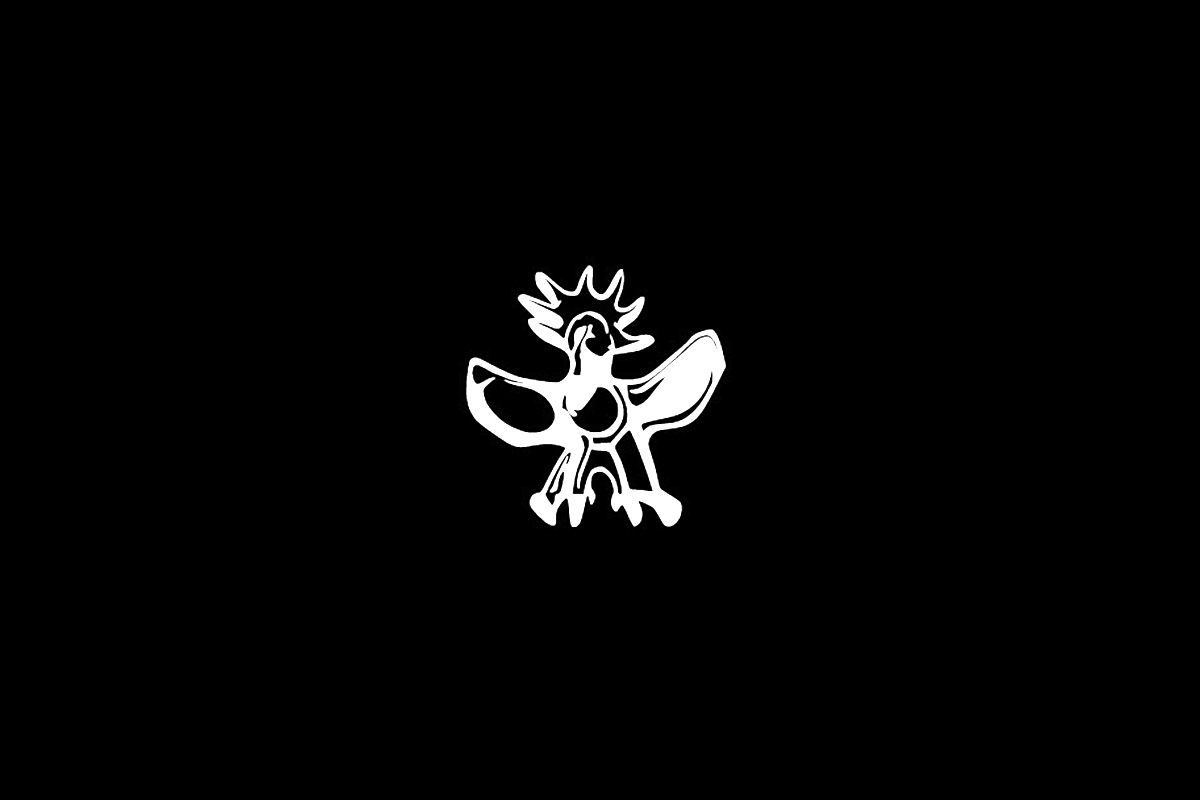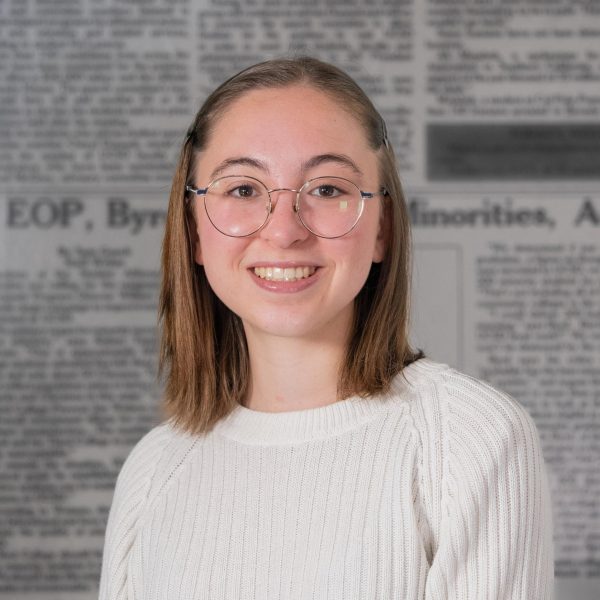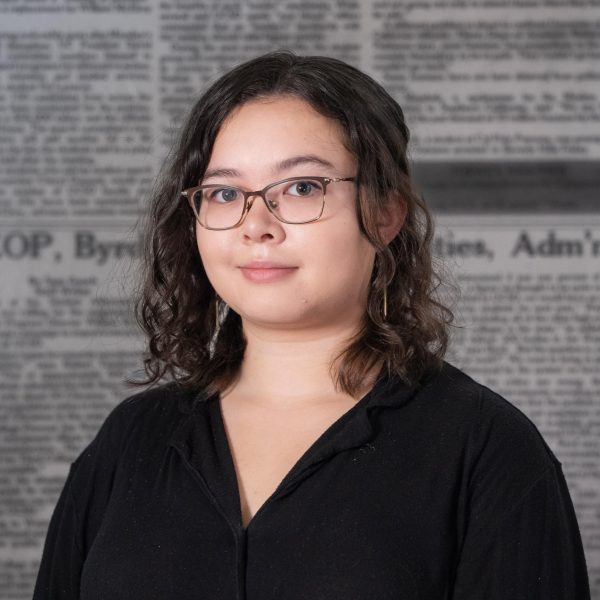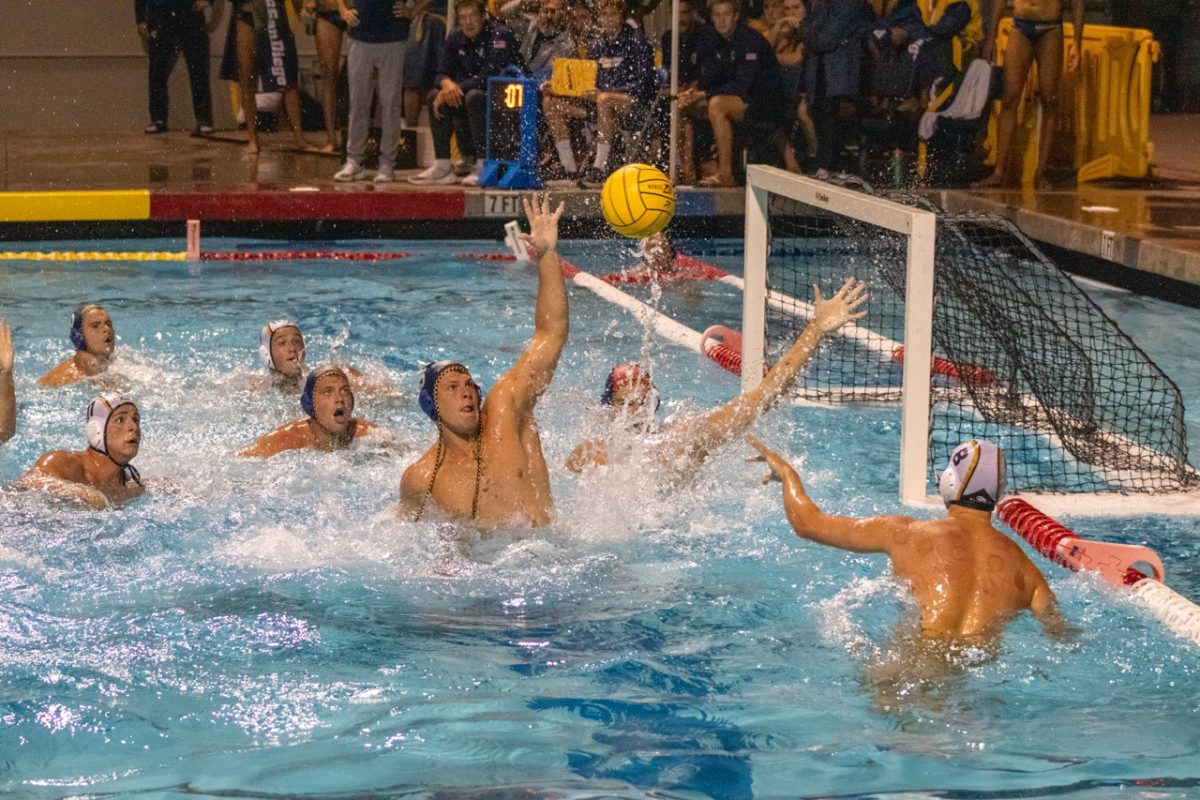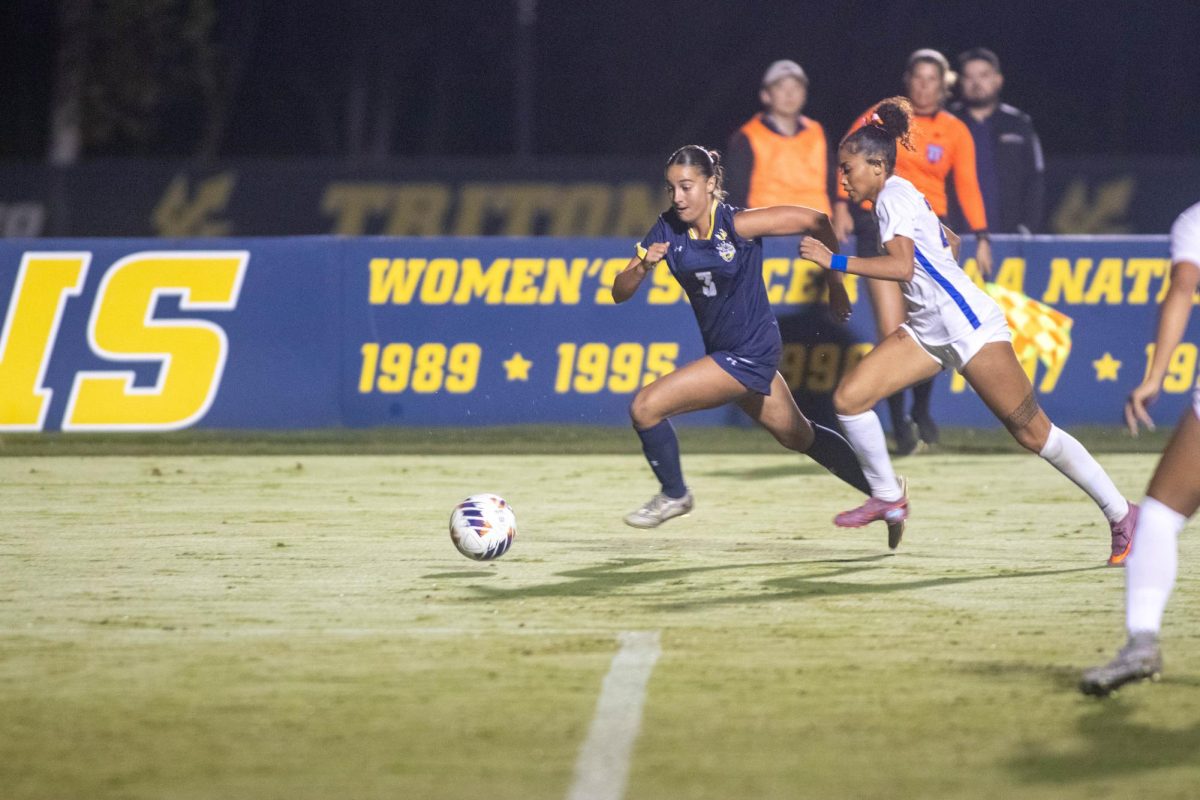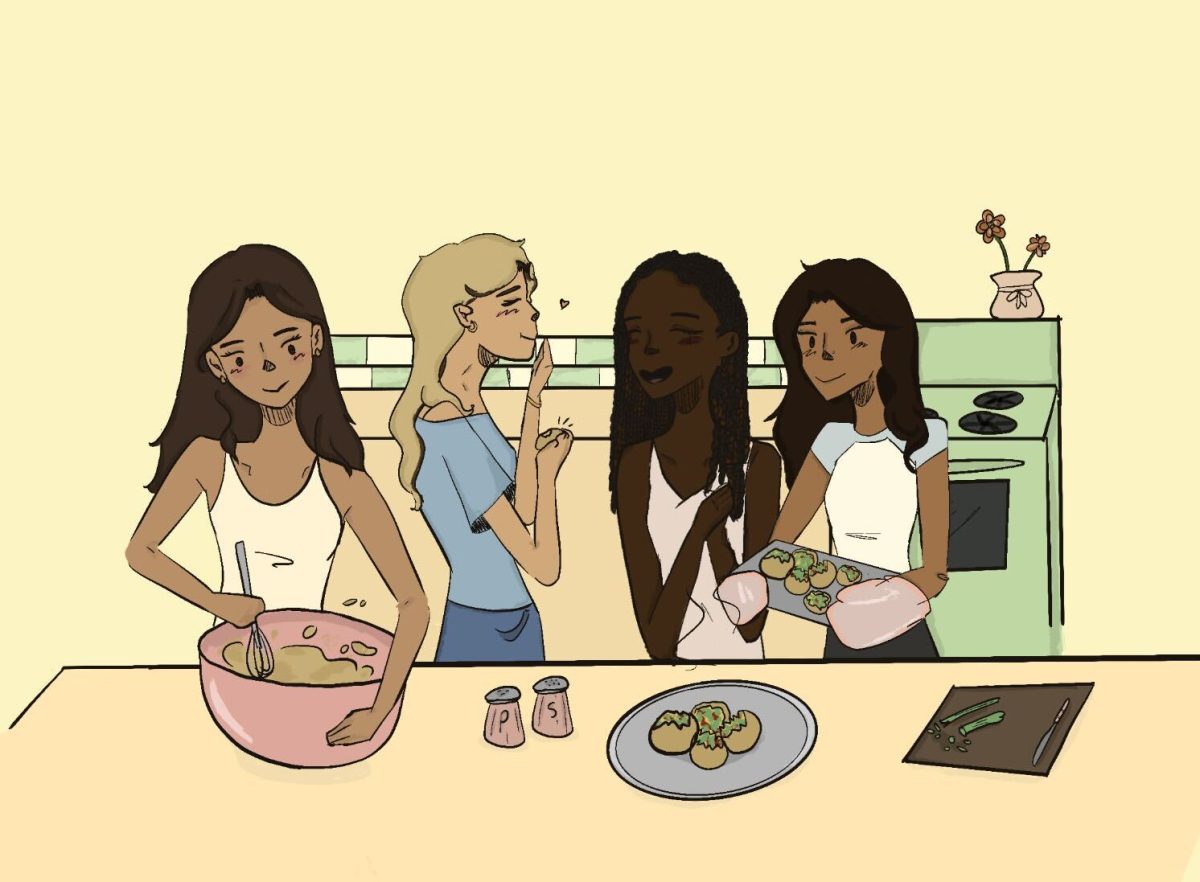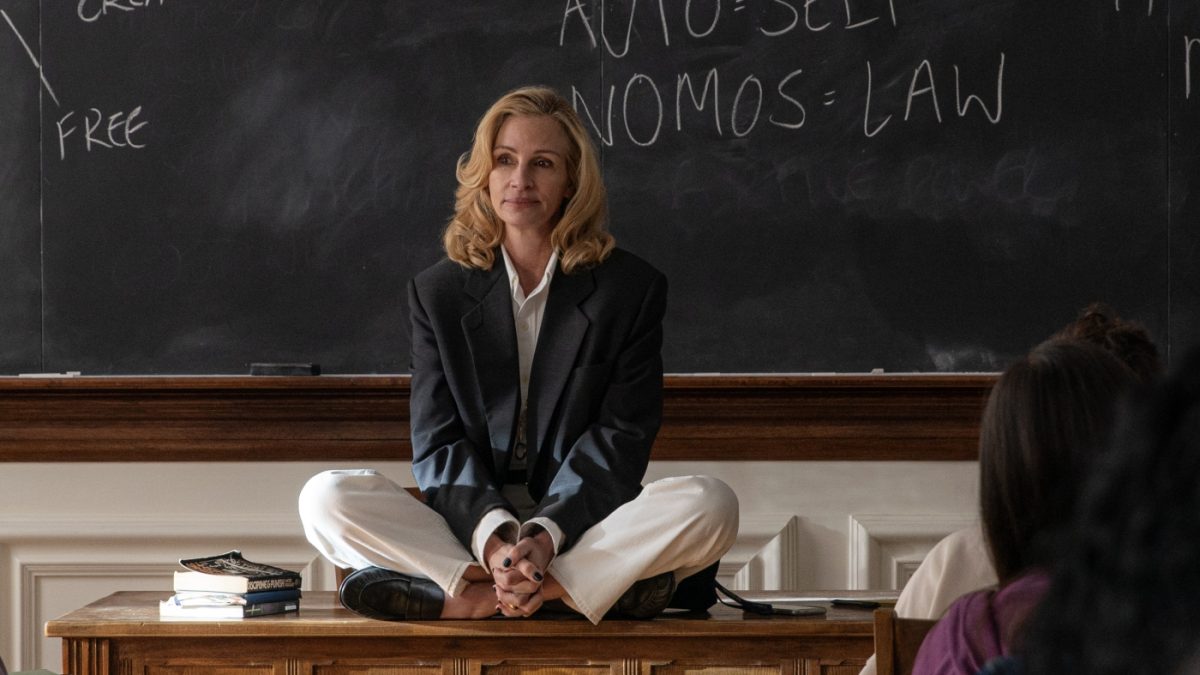Victoria Chang poetry reading and Q&A: A conversation between art and poetry
Victoria Chang sees herself as a visual learner. Since she first began writing poems, Chang has been playing with form and constraint, taking inspiration from the world around her. Now, in her seven — and counting — published poetry collections, she primarily writes ekphrastic poetry: poetry that interacts with and takes inspiration from visual art.
On Thursday, May 8, UCSD students and community members filled Price Center Theater to listen to a reading from Chang’s various poetry collections, with a special focus on her 2024 poetry collection, “With My Back to the World.” The event was hosted by the Humanities Program and New Writing Series to celebrate AAPI Heritage Month and spotlight AAPI writers like Chang.
During the Q&A portion of the event, moderated by UCSD Humanities Program Director Antony Lyon, Chang described how many of her past works have also sought to amplify Asian American stories. Books like “Eureka” shed light on historic atrocities like the 1885 burning down of Chinatown in Eureka, California, and the 2021 Atlanta spa shooting that left eight people dead, including six women of Asian descent.
“When I first started, there weren’t a ton of people writing that kind of looked like me,” Chang said. “I was just digging around looking for any sort of AAPI poets or Asian-American poets or marginalized poets.” This struggle to find representation was one of her primary inspirations for pursuing writing as a career.
As Chang read each of her poems in her hypnotically-measured, melodic tone, she displayed the text on the projector screen beside her — including the paintings that inspired the pieces’ structures and themes. Her work features artists with a wide variety of abstract styles, from Agnes Martin to On Kawara, Gustav Klimt, and Joan Mitchell. Using each visual work as inspiration for her poems’ tone and structure, Chang delved into painful life experiences such as her father’s time in hospice and her parents’ passing.
In 2021, the Museum of Modern Art commissioned Chang to write poetry in response to various works of art. In doing so, she found herself gravitating most toward artists who she did not understand, using her written work to bridge gaps in understanding across cultures and forge stronger connections between her own experiences and those of artists from different backgrounds.
Amid ongoing budget cuts to the arts and humanities across the United States, Chang finds it more important than ever for artists of all different backgrounds and life experiences to create art — no matter what form it may take.
“I think you have to, you have to write what calls you, whatever that is,” Chang said. “I think all writing and all art-making today is a form of resistance.”
— Abby Offenhauser, Features Editor; Camila De La Cerda Rodriguez, Contributing Writer; and Kayla Chau, Contributing Writer
‘Chōwa’: Celebrating Japanese-American identity with NSU’s annual Culture Show
“The name of the show, ‘Chōwa,’ means harmony, accord, reconciliation, and agreement,” second-year Yumi Okuda, creative director of Nikkei Student Union’s Culture Show, said to a captivated audience in Price Center Theater. “But to me, this word helps represent the balance: the in-between that exists at the intersection of all of the identities that make up a person.”
On Saturday, May 10, UCSD’s NSU presented its 24th annual Culture Show, titled “Chōwa.” The annual play, which NSU students write and direct every year, is meant to celebrate and raise awareness of Japanese-American student experiences. With charming characters and a poignant plotline, this year’s play transformed the theater into a vibrant, energetic space where attendees could get lost in the fictional story.
“Chōwa” follows Japanese-American college freshman Kokoro as she navigates family expectations and cultural identity after moving from Wyoming to the West Coast for her first year of college. Kokoro’s mother, determined to respect her late parents’ wishes, pushes Kokoro to focus on her business major and maintain a traditional mindset. As Kokoro reflects on and reconciles her Japanese heritage with her American upbringing, her mother eventually accepts her own way of expressing and connecting with her identity.
Second-year Iliana Encinares, who portrayed Kokoro, demonstrated a transition from a young and nervous high school graduate to a confident rising sophomore, welcoming other Japanese-American freshman into her school’s NSU community. Along the way, her performance, along with those of second-year Amanda Petrillo (Kokoro’s mom) and third-year Philip Brundage (Kokoro’s dad), showcased the complicated family dynamics that can arise in Japanese-American families when young adults begin to form their own cultural identities.
Okuda wrote and directed the play over the course of this school year alongside second-year Elanor Hurwood, NSU’s Culture Show administrative director for this year. The story of “Chōwa” was inspired in part by Okuda’s experience growing up in Florida, where she and her sister were the only Japanese-Americans at her high school.
“Of course, there were nights when I thought, ‘How am I going to finish writing this script in time?’ or, ‘What if this isn’t good enough?’” Okuda continued in her speech. “But Elanor and all my other lovely friends at NSU were always there to support me. … Being director of Culture Show has given me the space and opportunity to become closer with my own Japanese identity and discover things about myself that were hidden away.”
In a speech prior to the show, Hurwood described her own personal connection to the story.
“Since coming to UCSD and joining NSU, I’ve learned a lot more about myself and have come to appreciate my identity a lot more,” Hurwood said. “The core of this show is the importance of building communities like NSU, and ensuring that we continue to tell the stories of our past.”
— Abby Offenhauser, Features Editor; Jacqueline Lim, Contributing Writer; and Jocelyn Almanza, Contributing Writer
Mixing tradition and modernity with UCSD Rec and PASA’s taiko workshop
On Friday, May 16, UCSD Recreation and the Pacific Islander and Asian American Staff Association collaborated to put on a taiko workshop led by UCSD alumnus Jeff Onuma. The sound of taiko filled Main Gym as UCSD students learned how to play this traditional Japanese drum.
The workshop began with a brief history lesson about taiko. Since the sixth century, taiko has had many uses, including festival music, religious practices, war songs, and village signals. The form of taiko best known in North America, kumi-daiko — or ensemble playing — originated in the early 1950s as a fusion between traditional music and jazz influences.
“One of the things that I tried to really express during the workshop was just the idea of how taiko has this really interesting mix between the sort of history and traditions of Japanese culture, but also mixed in with this very new, sort of young blood art form,” Onuma said. “For a lot of people, the idea of being rather new to this country and having sort of a mix of cultures all coming together within yourself as you’re being raised up as an Asian American [is very relatable].”
Taiko does not have a written form like many forms of music do; instead, songs pass on orally and through repetition. Onuma taught a copycat game to the audience, encouraging song learners to follow the rhythms as the leader played them, demonstrating one such way to pass on that knowledge.
Onuma taught attendees many different taiko rhythms and patterns throughout the workshop. Among these were endurance training and a pace-changing drum roll called an oroshi, which mimics the sound of a storm. He emphasized his hope that the workshop would encourage more people to learn about taiko rather than feeling distant from a cultural art form they feel doesn’t belong to them.
“While I do really want to express the rich culture and history behind it, I think there’s also the risk of cultural art forms seeming unapproachable. … It feels almost othering to some people,” Onuma explained. “Even for myself, sort of being a fourth generation Japanese-American, before starting taiko to a certain extent, I felt like I wasn’t Japanese enough to play it. So I really hoped that through the workshop it became more friendly and inviting to other people, both Asian-American and not.”
– Miriya Huie, Features Editor
K-pop, cream puffs, and community: PASA’s K-pop photocard trading event
Decorated with colorful memorabilia and blasting K-pop tunes, UCSD’s Biomedical Research Facility bustled with laughter and conversation this past Friday, May 23, for the PASA’s APIA Heritage Month event. Inside, students gathered to partake in one of the K-pop fandom’s most time-honored traditions: photocard trading.
Sharon Young, a research coordinator at UCSD School of Medicine and PASA member, planned the event with support from her colleagues on the PASA planning committee. As part of PASA, Young shares in the goals of promoting community for APIA students; she first hosted a photocard trading event two years ago in order to build connections within the K-pop fandom on campus. Last year, she got to host the event as part of PASA’s annual APIA Heritage Month event programming; the organization now hopes for Young’s event to become an annual UCSD tradition.
“I wanted to curate a joyful space to connect with community, make new friends, and learn more about this amazing intersectionality of culture and music that is K-pop,” Young said.
As a longtime K-pop fan, Young has been trading photocards since 2018. She started her trading journey with BTS but has since branched out into a variety of other groups. Some of her current favorites include NCT 127, &Team, Monsta X, and Ateez. For the Friday event, Young brought three large binders full of cards to show attendees.
As students arrived to trade their cards, they found the room’s whiteboards decorated by colorful marker with phrases like “Happy APIAH Month!” and “Trade a photocard — make a new friend!” The room’s tables, arranged in a circle, were covered in K-pop-themed freebies from stickers to bracelets to CDs. Attendees mingled, sorted through freebies, and enjoyed Korean cream puffs from local APIA and women-owned bakery Mon Chourie.
The event began with introductions from attendees, who were able to bond over their areas of study, campus orgs, and favorite K-pop groups. Young arranged K-pop-themed trivia questions for those sitting around the circle to answer, with special prizes for the winners — including a special edition GQ Magazine featuring BTS member J-Hope. Young also set up a “deco station” for attendees to embellish their new photocards.
To Young, K-pop — and especially card trading — is a unifying force with the powerful ability to bridge differences in experiences, cultures, and even generations.
“I appreciate the way K-pop fans collect cards of their favorite artists with such reverence, delight, and pluck,” Young said. “It’s fun to see some people put their cards in [a] binder, like me, or carry around their favorite cards to events like a concert or a birthday. … All of this is inspiring to me and shows me myriad expressions of love and gratitude for music, dance, [and] culture.”
– Abby Offenhauser, Features Editor and Destiney Friday, Contributing Writer




